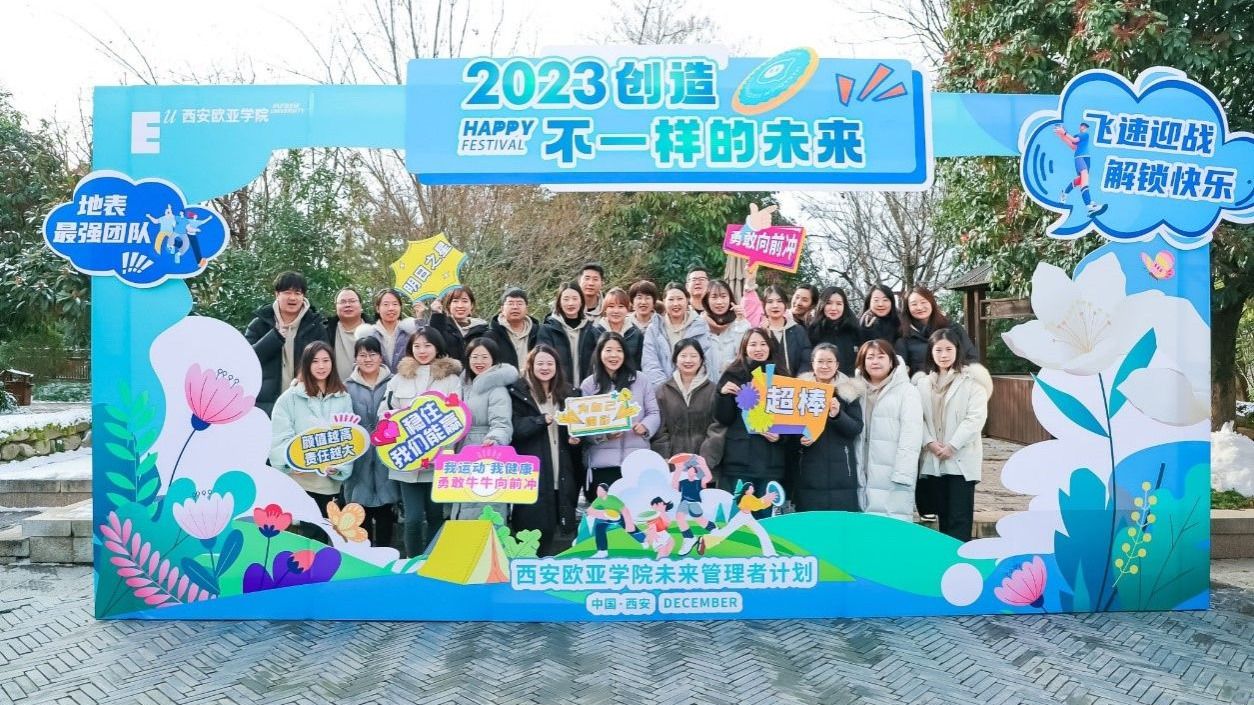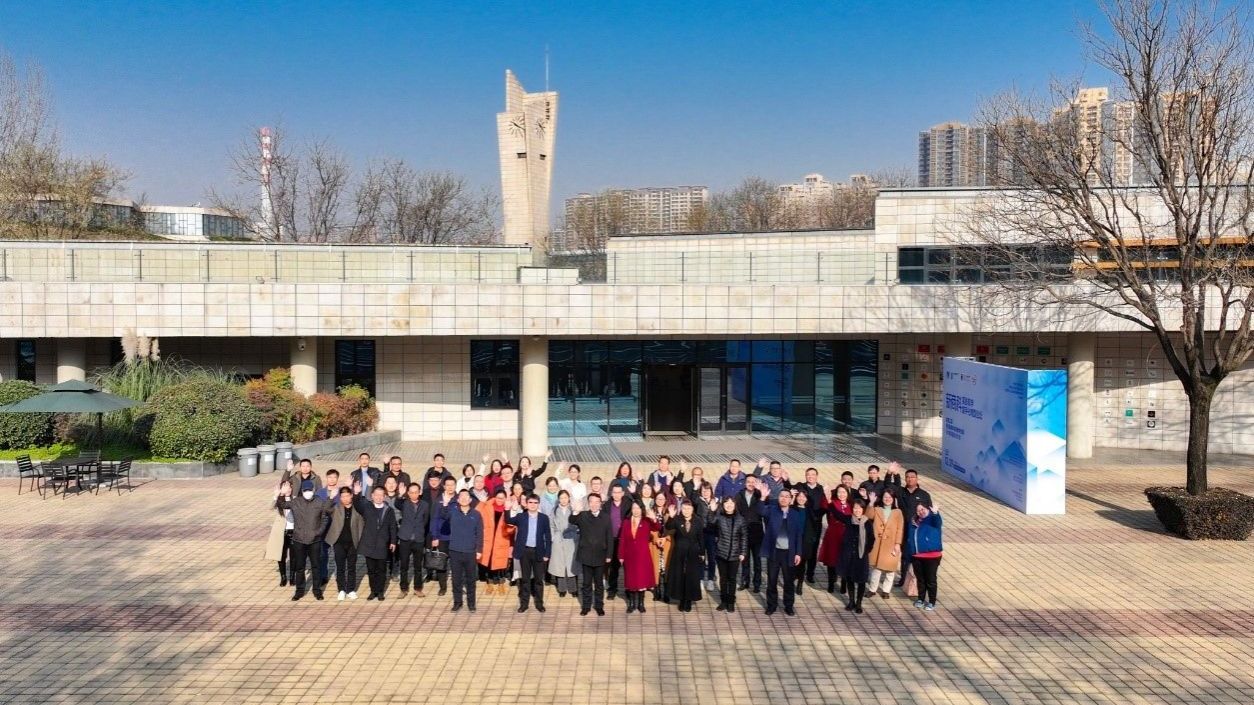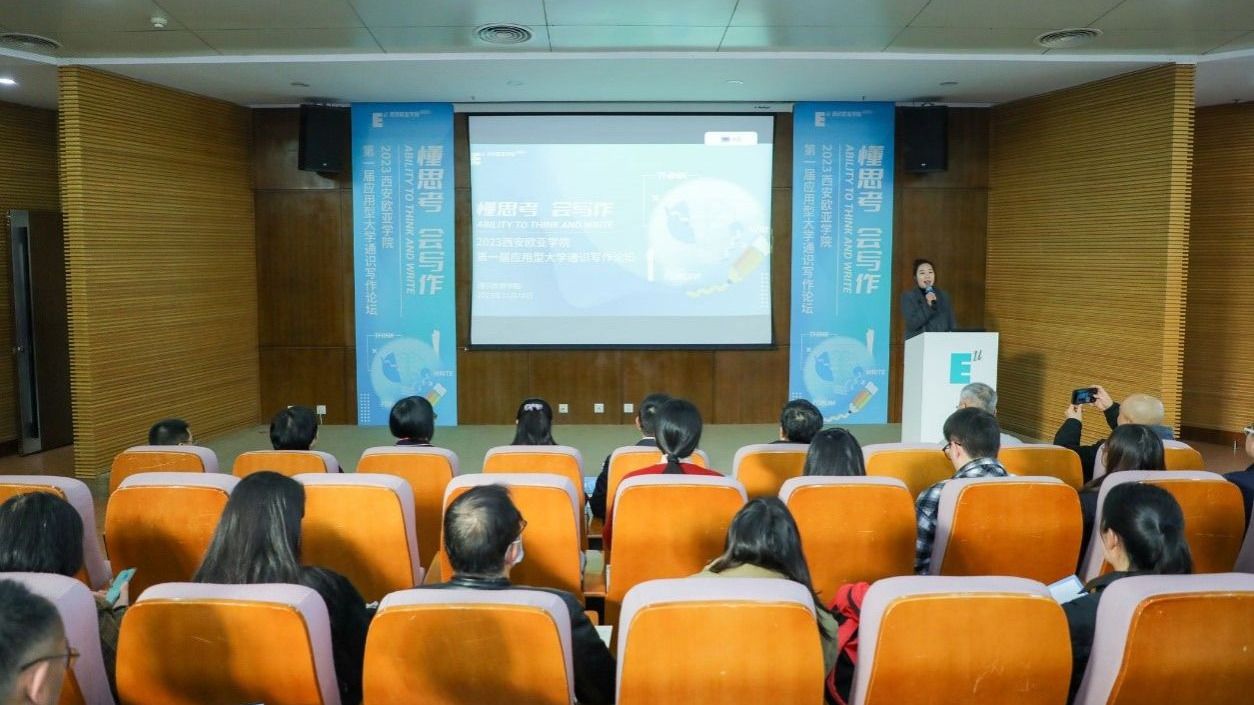
On November 9, "Learning for Adulthood — 100 Words Theme Exhibition of Chinese and Western General Education" opened in the lobby on the first floor of the library. The School of General Education selected 100 words in the field of general education as its exhibition content, starting from Socrates in the 5th century BC to Xi'an Eurasia University's exploration of general education. The exhibition was arranged by characters, books, events, and important ideas. From the East to the West, from classics to modern times, it outlined the origin, development, glory, change, and ideal of general education, aiming at popularizing general education knowledge and conveying general education concepts to teachers and students.
More than 30 people attended the opening ceremony, including Vice President Wang Yan, Executive Dean of the School of General Education Huang Xin, heads of secondary schools, and teacher representatives. Dang Sheng, Curator of the Museum of Design of Xi'an Eurasia University and Visiting Professor at Kyoto University of the Arts in Japan, and Su Zhongqiu, Deputy Curator, Artist, and Visual Art Teacher, were invited to talk about general education with teachers and students on site.
"May Teachers and Students be Nourished and Enlightened by General Education"

According to Huang Xin, Curator of the exhibition and Executive Dean of the School of General Education, this theme exhibition connected the most important thinkers, works, and keywords on general education in China and the West in chronological order to reveal how thinkers put forward educational concepts and practice models based on their own historical background. At the same time, this exhibition selected keywords with "equal emphasis on Chinese and Western education", contrasting China's general education with the Western one. On the one hand, it is not difficult to find that there are similarities in the higher-level pursuit and concept of general education between China and Western countries. On the other hand, it can also be seen that China has made great efforts in general education for a long time.
"To develop general education, we need to face China's own traditions, dilemmas, and solutions." Huang Xin hopes that this exhibition can help teachers and students understand the educational goals and pursuit of general education and also welcome all teachers and students to appreciate, ponder, and think slowly, enter the world of these great thinkers, and get nourishment and inspiration.
"General Education Has a Lifelong Impact on People"

This theme exhibition displayed many complex contents of general education in the form of keywords. As Wang Yan said in her speech, the exhibition rigorously dated and sorted characters, events, books, and ideas. The 100 keywords of general education finally selected summarize the concepts of Chinese and Western general education, enabling visitors to understand the development process of education in the same period and obtain a clearer and more accurate search origin in the process of understanding and practicing general education, which fully reflects the value of keywords. On this basis, a certain number of keywords of "points moving into lines and lines moving into planes" will help each visitor form his or her own knowledge context and establish a unique cognition and way of thinking for general education.
"General education has a lifelong impact on people. The knowledge and abilities brought by general education will continue to be deposited in their minds and souls like stars, guiding them to get out of confusion, easing their anxiety, and influencing others in their future life." Wang Yan expressed her gratitude and salute to all teachers who have contributed to general education.
Review and Sharing: The Development of General Education in China and the West

In the round-table dialogue at the opening ceremony, Su Zhongqiu and Dang Sheng reviewed and shared with teachers and students on site the development history of general education in China and the West.
Taking the dialogue between Socrates and Alcibiades as an example, Su Zhongqiu explained how "trivium" continued in the Middle Ages and evolved into the "trivium and quadrivium". Since ancient Rome, Europe has had a concept called "la liberalaj artoj" (the seven liberal arts). The original meaning of "la liberalaj artoj" is the knowledge that a free man should have and the seven subjects he should study, as opposed to professional, vocational, and technical courses. Generally speaking, the seven arts are divided into two levels, namely "trivium and quadrivium". Trivium refers to grammar, rhetoric, and logic. It is a core part of liberal arts education, that is, teaching people how to understand words and use language to interpret ideas clearly. Ancient China often emphasized that "reading must begin with literacy", which has a similar profundity. Quadrivium refers to arithmetic, geometry, music, and astronomy, that is, the basic methods of knowing and understanding the world.
For more than 2,000 years, the connotation of general education has not changed since ancient Greece. It is beyond utilitarianism and practicality. Instead of focusing on specific skills, it focuses on extensive humanistic edification, liberal arts education, mental inspiration, and the cultivation of "soft power" that people can use for life. These unchanging things are the core values of today's university education. As an applied university, Xi'an Eurasia University should also continuously develop its own general education contents. For example, the values and codes of conduct as a good citizen and good professional behaviors in various positions may be more "down-to-earth" core elements.

Dang Sheng compared the "six arts" of the Zhou Dynasty with the "seven liberal arts". "Six arts" refer to the six skills in the aristocratic education system of the Zhou Dynasty in ancient China, namely: rites, music, archery, equestrianism, calligraphy, and mathematics. "Six arts" education lays equal stress on civil and military affairs, attaches importance to the all-round development of people, and achieves the comprehensive development of morality, intelligence, physique, and aesthetics. It is the combination of knowledge teaching and skill training and also the embryonic form of general education in China. Such an education system continued to the Tang, Song, Ming, and Qing Dynasties. Although the "six arts" also had certain limitations, they still cultivated many influential philosophers, politicians, and militarists who could act as generals and ministers or become poets, calligraphers, painters, and musicians and showed talents and abilities in various aspects.
However, in the current era of knowledge explosion, professional education makes people become talents who master specialized skills. The separation between professions is becoming more and more obvious today. In this era, what is the significance of general education and its relationship with professional education? Dang Sheng believes that we should draw on the spirit of modern values from general education and that cultivating a sound personality for students is crucial in general education. The significance of general education is to help students establish basic morals and etiquette, independent thinking, value judgment, aesthetic concepts, and the ability of continuous learning.


The "Learning for Adulthood — 100 Words Theme Exhibition of Chinese and Western General Education" will last for one month. The School of General Education welcomes all visitors to stroll through the long river of history and comprehend the meaning of general education.
(Contributed by Yang Lulu from the Humanities and Arts Course Center, School of General Education, and Gai Jialing from the School of Marxism)







